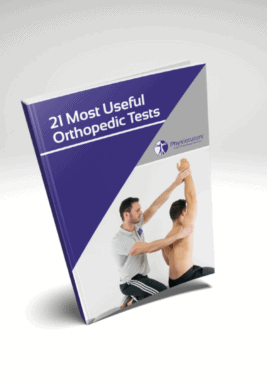Learn
4-Type Classification by Kibler | Scapular Dyskinesis Assessment
Kibler et al. (2002) were pioneers in the classification of scapular dyskinesis. Up to today, the 4-type classification is the most commonly used method in scientific studies to determine if participants display scapular dyskinesis or not. The 4-type classification has been evaluated regarding its reliability by the author himself. They found an intra-rater reliability of k = 0.5 and an inter-rater reliability of k = 0.4. This means that this method is moderately reliable.
Watch the video if you want to learn more about the classification in detail:
Execution:
1. The patient performs 3 repetitions of bilateral shoulder elevations in the scapular plane at a speed of 45°/s
2. Afterwards, the patient performs 3 repetitions of bilateral shoulder abduction at a speed of 45°/s
3. The examiner observes for winging and/or dysrhythmia
Based on the findings, Kibler divides the scapular dyskinesis into the following 4 types:

21 OF THE MOST USEFUL ORTHOPAEDIC TESTS IN CLINICAL PRACTICE

There are two alternatives for the Scapular Dyskinesis Test. Feel free to check out the two other methods below:
- Scapular Dyskinesis Test by McClure
- Yes/No Method
Like what you’re learning?
BUY THE FULL PHYSIOTUTORS ASSESSMENT BOOK
- 600+ Pages e-Book
- Interactive Content (Direct Video Demonstration, PubMed articles)
- Statistical Values for all Special Tests from the latest research
- Available in 🇬🇧 🇩🇪 🇫🇷 🇪🇸 🇮🇹 🇵🇹 🇹🇷
- And much more!








